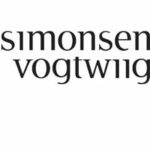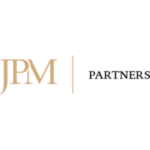-
Does your jurisdiction have an established upstream oil and gas industry? What are the current production levels and what are the oil and gas reserve levels?
Yes, Indonesia has an established upstream oil and gas industry. According to the 2024 ENI World Energy Review (“ENI 2024 Review”) and the 2023 Handbook of Energy and Economic Statistics of the Ministry of Energy and Mineral Resources of Indonesia (the “MEMR Ministry”) (“2023 MEMR Handbook”), Indonesia’s proven natural gas reserves amounted to 35.30 trillion cubic feet (“Tcf“), and its proven oil reserves stood at 2.41 billion barrels. Oil production was 628,000 barrels per day while gas production was 57.87 million tonnes per annum. According to the PwC Oil and Gas Guide 2024 (“2024 PwC Guide”), Indonesia has 453 Tcf in coal bed methane (“CBM”) reserves (the sixth largest in the world), while shale gas reserves are estimated at 574 Tcf.
-
How are rights to explore and exploit oil and gas resources granted? Please provide a brief overview of the structure of the regulatory regime for upstream oil and gas. Is the regime the same for both onshore and offshore?
Law No 22 of 2021 regarding Oil and Gas, as lastly amended by Law No 6 of 2023 regarding the Stipulation of Government Regulation in lieu of Law No 2 of 2022 regarding Job Creation (the “Job Creation Law”) (together, the “Oil and Gas Law”), provides that oil and gas resources located in Indonesia are national assets controlled by the State. The Oil and Gas Law grants the Indonesian Government (the “Government”) the exclusive right over oil and gas exploration and exploitation in Indonesia. The Minister of Energy and Mineral Resources (“MEMR”) determines upstream work areas based on consultations with and recommendations from the respective regional governments.
A work area can be offered either through a tender or a direct offer, as regulated under MEMR Regulation No 35 of 2021 regarding Procedure for Allocating and Offering of Oil and Gas Working Areas (“MEMR Reg. 35/2021”). Under a direct offer mechanism, a local business entity or a permanent establishment established by a foreign entity (a “PE”) may submit a proposal and conduct a joint study with the MEMR Ministry to secure rights over an open work area. For a tender, the MEMR Ministry will announce the tender and stipulate the tender process (which shall entail, inter alia, purchase of bid documents, submission of participation documents) to acquire new acreage offered by the Government. Either a local business entity or a PE may participate in the tender process.
Once awarded a working area, the awardee will enter into a cooperation contract (in the form of a production sharing contract or “PSC”) with the Government, represented by the Special Task Force for Upstream Oil and Gas Business Activities (Satuan Kerja Khusus Pelaksana Kegiatan Usaha Hulu Minyak dan Gas Bumi or “SKK Migas”), pursuant to which the awardee will act as a Contractor (a “PSC Contractor”) to SKK Migas.
The general legal framework for upstream oil and gas activities in Indonesia is governed by the Oil and Gas Law and Government Regulation No 35 of 2004 regarding Upstream Oil and Gas Activities, as lastly amended by Government Regulation No 55 of 2009 (as amended, “GR 35/2004”). The MEMR Ministry, as the primary government authority for the oil and gas sector, has, through the MEMR, issued various ministerial regulations addressing key aspects of the industry, such as MEMR Regulation No 29 of 2017 regarding Licensing in Oil and Gas Business Activities, as lastly amended by MEMR Regulation No 52 of 2018 (as amended, “MEMR Reg. 29/2017”), and MEMR Regulation No 48 of 2017 regarding Business Supervision within the Energy and Mineral Resources Sector, as partially revoked by MEMR Regulation No 7 of 2020 regarding Procedures for the Granting of Areas, Licensing, and Reporting in relation to Mineral and Coal-Mining Business Activities, as amended by MEMR Regulation No 16 of 2021 and partially revoked by MEMR Regulation No 10 of 2023 regarding Procedures for the Drafting, Submission, and Approval of Work Plans and Funding Budgets, and Procedures for the Reporting of the Implementation of Mineral and Coal-Mining Business Activities (as amended, “MEMR Reg. 48/2017”). In addition, SKK Migas, as the government body responsible for oversight in the upstream oil and gas sector, has enacted several detailed guidelines to regulate upstream activities, such as guidelines for the procurement of goods and services by PSC Contractors, and guidelines for work programs and budgets. This regulatory regime is applicable to both offshore and onshore oil and gas operations, although there are specific regulations that apply to either offshore or onshore activities
-
What are the key features of the licence/production sharing contract/concession/other pursuant to which oil and gas companies undertake oil and gas exploration, development and production?
Each entity is limited to holding one PSC, usually awarded for 30 years (typically consisting of a 10-year period for exploration, followed by a 20-year period for exploitation), although there is no limit on the number of PSCs that may be held by subsidiaries of a local entity or a PE. There are currently two types of PSCs in Indonesia:
Cost-Recovery PSC
Prior to 2017, all PSCs in Indonesia followed a cost-recovery scheme, in which PSC Contractors were entitled to obtain reimbursement of their operating costs and capital expenditures through the production of hydrocarbons produced in the area covered by their PSC (“Cost-Recovery PSC”). Under this model, depending on the terms of a given PSC, production output was subject to a first tranche petroleum (“FTP”) requirement, where a percentage of the oil and gas produced was first allocated to the Government (or in some cases to the Government and the PSC Contractor) before any production was allocated to the recovery of costs. The remaining production was then first allocated to the recovery of costs pursuant to the Accounting Procedures attached to a PSC, with any balance shared between the PSC Contractor and the Government according to the agreed-upon production split in the PSC. Generally speaking, current operating costs were recovered first and then prior years’ operating costs were recovered together with capital expenses in accordance with the depreciation schedule set out in the Accounting Procedures, and certain costs were not eligible for cost recovery such as bonuses payable under a PSC, expenses incurred for personal and/or family interests of employees and management, administrative sanctions, tax consultancy fees, costs for technical training for foreign workers, and interest on loans.
Gross-Split PSC
The gross-split PSC was first introduced by the Government in 2017. Under this PSC model, PSC Contractors are responsible for paying all costs and expenses, without the option for cost recovery. Instead, they participate in a gross production sharing arrangement, where their portion of the production is determined by fixed percentages (“Gross-Split PSC”). Recently, the MEMR issued MEMR Regulation No. 13 of 2024 regarding Gross-Split PSCs (“MEMR Reg. 13/2024”), which replaced the previous 2017 regulation and its amendments, to introduce a revised framework to the Gross-Split PSC. MEMR Reg. 13/2024 is supplemented by MEMR Decree No. 230.K/MG.01/MEM.M/2024 regarding the Guidelines for the Implementation and Components of Gross-Split PSCs (“MEMR Decree 230/2024”). MEMR Reg 13/2024 provides the base split calculation for Gross-Split PSCs and includes a framework for additional profit-sharing percentages to be granted to the PSC Contractor to address project-specific conditions and enhance the economic feasibility of the PSC for the PSC Contractor. PSC Contractors may also receive additional shares if key project milestones are achieved, such as POD approvals or contract extensions, while the State can claim a larger share if field commercialization surpasses economic expectations.
We discuss the possible changes to a PSC Contractor’s share under a Gross-Split PSC under MEMR Reg. 13/2024 in further detail in our response to Question 18 below.
-
Are there any unconventional hydrocarbon resources (such as shale gas) being developed and produced and is there a separate regulatory regime for those unconventional resources?
Yes, as noted above, Indonesia has reserves of both CBM and shale gas. Unconventional oil and gas exploration and exploitation are governed by the Oil and Gas Law and further regulated by MEMR Reg. 35/2021. The latter establishes the procedures for designating and offering unconventional oil and gas working areas, which can be allocated through either direct offers or standard tender processes. Entities awarded a working area for unconventional hydrocarbons would enter a PSC to develop these resources.
-
Who are the key regulators for the upstream oil and gas industry?
The upstream oil and gas sector in Indonesia is governed by two key authorities: (i) the MEMR Ministry, which is the central government ministry overseeing the energy and mineral resources sector in Indonesia, and (ii) SKK Migas, which is the government body managing upstream oil and gas activities. In addition, certain sectoral Ministries have the authority to regulate the conduct of petroleum operations, such as the Ministry of Forestry and Ministry of Environment/Head of Environmental Control Agency. The taxation of PSC Contractors is under the auspices of the Ministry of Finance.
-
Is the government directly involved in the upstream oil and gas industry? Is there a government-owned oil and gas company?
The Government oversees and regulates the upstream oil and gas industry through the MEMR Ministry and SKK Migas. The MEMR Ministry as well as other Ministries formulate regulations for the conduct of oil and gas activities. Meanwhile, SKK Migas manages and supervises the upstream sector and the conduct of petroleum operations under PSCs, holding the authority to organize and oversee the management of upstream oil and gas operations through the issuance of working guidelines for PSC Contractors.
PT Pertamina (Persero) (“Pertamina”) is Indonesia’s state-owned oil and gas company, and it and its subsidiaries are involved in a number of aspects of the upstream oil and gas industry. In particular, its direct and indirect subsidiaries participate in a number of PSCs, holding Participating Interests (“PIs”) in multiple oil and gas working areas in Indonesia. These subsidiaries act as both operators and non-operators of PSCs.
Pertamina enjoys certain special rights conferred by the Government. For example, based on Government Regulation No 35 of 2004 regarding Upstream Oil and Gas Activities, as amended by Government Regulation No 55 of 2009 (“GR 35/2004”), Pertamina holds a right of first refusal if a PSC Contractor intends to transfer its interest in a PSC to a third party. Furthermore, MEMR Regulation No 23 of 2021 regarding the Management of Oil and Gas Working Areas for which the PSC will Expire, as partially revoked by MEMR Reg. 13/2014 (“MEMR Reg. 23/2021”), gives Pertamina the option to assume operations of a work area once the PSC expires, regardless of whether the original PSC Contractor seeks an extension. If both Pertamina and the original PSC Contractor express interest in continuing operations in the work area, the MEMR has the authority to decide whether Pertamina, the original PSC Contractor, or both will be allowed to take over the operations.
Finally, upon approval of the first Plan of Development (“POD”) under a PSC, the PSC Contractor must offer a 10% PI in its PSC to a regionally owned enterprise (badan usaha milik daerah or “BUMD”) that is (i) fully owned by the regional government, (ii) at least 99% government-owned, with the remainder held by an entity affiliated with the regional government, (iii) established under a regional government regulation, and (iv) exclusively manages the offered PI without engaging in other business activities. The BUMD can either accept or reject the offer based on its financial capacity. If the offer is declined, the PI must then be offered to a state-owned entity (badan usaha milik negara or “BUMN”). The regulation governing the transfer of this 10% PI was amended in January 2025. However, the core principles and framework of the transfer remain largely unchanged. Further elucidation on the notable changes can be found in our response to question number 18 below.
-
Are there any special requirements for, or restrictions on, participation in the upstream oil and gas industry by foreign oil and gas companies?
There are no specific requirements or restrictions imposed on foreign oil and gas companies to participate in the Indonesian upstream oil and gas industry and hold a PI in a PSC that are not imposed on local Indonesian oil and gas companies, except a foreign company is required to establish a PE to hold a PI and these PEs are subject to a branch profit tax that is not applicable to local companies. Under the Oil and Gas Law and GR 35/2004, upstream oil and gas activities in Indonesia may be carried out by either a business entity or a PE. A foreign investor may elect to establish a business entity in Indonesia by forming an Indonesian limited liability company or by establishing a PE in Indonesia. An offshore subsidiary of an oil and gas company holding a PI in a PSC is considered a PE.
-
What are the key features of the environmental and health and safety regime that applies to upstream oil and gas activities?
The environmental aspects of the upstream oil and gas activities in Indonesia are generally subject to oversight by the central government through the Ministry of Environment (“MOE”) and their regional offices. Generally speaking, Indonesia adopts the “polluter pays” principle. Environmental licenses are issued by either the MOE or their regional offices. The general environmental regulations in Indonesia include:
- Law No 32 of 2009 regarding Environmental Protection and Management, as amended by the Job Creation Law (as amended, the “Environmental Law”), which is the primary law regarding environmental protection in Indonesia, covering various aspects such as environmental management, damage, and sanctions for environmental crimes;
- Government Regulation No 22 of 2021 regarding Implementation of Environmental Protection and Management (“GR 22/2021”), which outlines the regulatory framework for environmental licensing in Indonesia, after the passage of the Job Creation Law;
- Minister of Environment and Forestry Regulation No 4 of 2021 regarding Types of Business and/or Activities Which Are Mandated to Have Environmental Impact Analysis, Environmental Management Effort and Environmental Supervision Effort or Letter of Capability of Environmental Management and Supervision (“MOEF Reg. 4/2021”), which contains a list of business activities and the required environmental regime to be followed for each activity, such as the requirement to obtain an Environmental Impact Assessment (Analisis Mengenai Dampak Lingkungan or “AMDAL”) or Environmental Management and Monitoring Measures (Upaya Pengelolaan Lingkungan dan Upaya Pemantauan Lingkungan, or “UKL-UPL”).
All business activities in Indonesia will be subject to different environmental assessment requirements, depending on the scale and potential impact of the business activity. The Environmental Law and its implementing regulations provide that business activities with a significant impact on the environment require an AMDAL, business activities with no significant impact require a UKL-UPL, while low-risk business activities need a self-declaration (Surat Pernyataan Pengelolaan Lingkungan or “SPPL”). These requirements are prerequisites for obtaining environmental approvals but do not function as business licenses themselves.
During the exploration stage, PSC Contractors must submit a UKL-UPL report. Subsequently, during exploitation, they must complete an AMDAL. PSC Contractors must periodically report their environmental compliance with the relevant governmental authorities and secure the appropriate environmental approvals for their operations.
In addition, most PSCs require the PSC Contractor to conduct abandonment and site restoration (“ASR”) activities and establish and periodically deposit into an escrow account to finance the ASR activities. Even if a PSC does not mandate the conduct of ASR activities and the funding thereof, the work program and budget for any given year submitted to SKK Migas for approval will need to include ASR and the funding thereof to obtain SSEK Migas’s approval thereof. We discuss ASR further in our response to question number 11.
Meanwhile, for health, safety, and environment (“HSE”) matters, the MEMR Ministry and other Ministries, most notably the Ministry of Manpower (“MOM”), supervise the implementation of HSE standards in the oil and gas sector. Fulfilment of compliance standards set by the MEMR Ministry and the MOM is required to obtain certifications for equipment and installations. Failure to meet HSE requirements can result in administrative sanctions, including the potential revocation of licenses.
If petroleum operations will be conducted in a forest area or involve the use of above-ground or below-ground water sources, a PSC Contractor must obtain the necessary licenses and permits to operate in the forest area or use these water sources. To the extent that resource development involves upstream activities, such as the liquification of natural gas, the PSC Contractor will be required to obtain the necessary licenses. These licenses are likely be issued by several Indonesian governmental authorities.
-
How does the government derive value from oil and gas resources (royalties/production sharing/taxes)? Are there any special tax deductions or incentives offered?
Indonesia does not impose royalties on PSCs. The after-tax sharing proportion between the Government and the Contractor for a Cost-Recovery PSC has typically been set at 85:15 for oil and 70:30 for gas. For a Gross-Split PSC, as regulated under MEMR Reg 13/2024 and MEMR Decree 230/2024, the initial sharing proportion between the Government and the PSC Contractor is 53:47 for oil and 51:49 for gas. However, this initial split is subject to change based on several factors, including variable components such as reserve size, field location and infrastructure availability, as well as progressive components such as natural gas and crude oil prices. The Appendix of MEMR Decree 230/2024 provides the detailed calculation formula for split adjustments based on these components.
In Cost-Recovery PSCs, the State’s minimum income is secured through FTP. FTP is the first take of oil or gas immediately after production in a work area in one calendar year that is received by the State prior to cost recovery and profit calculation. The amount of FTP is determined in the relevant Cost-Recovery PSC. Historically, PSC Contractors were required to allocate an FTP of either 15% (for certain fields in Eastern Indonesia and Western Indonesia under the 1993 incentive package) or 20% for other fields. More recent PSCs set the FTP at 20% of production.
Taxes applicable to PSCs include income tax, VAT, import duties, regional taxes and other levies. A PSC may stipulate whether the tax laws and regulations applicable at the time of the PSC execution shall apply (stabilised) or whether the PSC shall follow the tax laws and regulations in effect from time to time during the term of the PSC. In addition, PSC Contractors are required to pay non-tax State revenues such as exploration and exploitation fees and bonuses, including a signing bonus and production bonuses, which are not subject to the cost-recovery regime.
Government Regulation No 79 of 2010 regarding Recoverable Operational Costs and Income Tax Treatment in the Upstream Oil and Gas Sector, as lastly amended by Government Regulation No 93 of 2021 regarding Income Tax Treatment for the Transfer of PI in Offshore Oil and Gas Business Activities (as amended, “GR 79/2010”), sets out certain guidelines for cost recovery and income tax in the upstream oil and gas sector and it provides for tax deductions during exploration and exploitation periods. Gross-Split PSCs are regulated under Government Regulation No 53 of 2017 regarding Tax Treatment in the Upstream Oil and Gas Sector for Gross-Split PSCs, as lastly amended by Government Regulation No 93 of 2021 (as amended, “GR 53/2017”), and further details on tax facilities are elucidated in Ministry of Finance Regulation No 67/PMK.03/2020 regarding the Granting of VAT or VAT and Luxury Goods Sales Tax, as well as Land and Building Tax Facilities for Upstream Oil and Gas Business Activities through Gross-Split PSCs (“MOF Reg. 67/2020”).
-
Are there any restrictions on export, local content obligations or domestic supply obligations?
Export Restrictions
Exports of oil and gas products resulting from upstream oil and gas business activities require the obtainment of a recommendation from the MEMR, which will consider domestic supply and demand in issuing such recommendation. Government Regulation No 36 of 2023 regarding Foreign Exchange Export Proceeds from the Business, Management and/or Processing of Natural Resources (“GR 36/2023”) and Bank Indonesia Regulation No 7 of 2023 regarding Foreign Exchange Export Proceeds and Foreign Exchange Import Payments (“BI Reg. 7/2023”) impose requirements on Indonesian exporters of natural resources, including oil and gas, to deposit their export foreign exchange proceeds in the Indonesian financial system. Specifically, Indonesian exporters of oil and gas must (a) deposit all export proceeds in their Indonesian bank accounts within a specified timeframe, and (b) retain at least 30% of those deposited proceeds in these accounts, or approved equivalents, for a minimum duration of three months. We note that press reports have indicated this percentage and/or the three-month period may be changed in the near future.
Local Content Obligations
The Oil and Gas Law mandates oil and gas business actors to prioritize the use of local manpower, domestic goods, services, and engineering and design capabilities in a transparent and competitive manner. Each PSC will mirror this requirement. Under MEMR Regulation No 15 of 2013 regarding the Use of Domestic Products for the Upstream Oil and Natural Gas Business (“MEMR Reg, 15/2013”), procurement activities must adhere to the Domestic Product Appreciation Book (the “APDN Book”) published by the MEMR. This book categorises goods and services as mandatory, maximised, or empowered for domestic use. Calculation of local content requirements (Tingkat Komponen Dalam Negeri or “TKDN”) is as follows:
- Goods: Calculated based on the ratio of domestic component costs to the total cost of the finished goods.
- Services: Calculated based on the ratio of domestic service costs to the total service cost.
- Combination of goods and services: Calculated based on the total domestic component costs to the combined cost of goods and services.
The provider’s status also affects the TKDN calculation. The MEMR classifies providers into the following categories:
- Domestic company: At least 50% ultimately owned by Indonesian entities.
- National company: 50% or more ultimately owned by foreign entities.
- Foreign company: Entirely foreign owned.
SKK Migas also sets out TKDN requirements for the procurement of goods and services by PSC Contractors through SKK Working Guidelines No PTK 007/SKKIA0000/2023/S9 regarding Procurement Guidelines for Goods and Services (5th Revision), as amended by Head of SKK Migas Decree No KEP-0120/SKKIA0000/2024/S9 of 2024 (“PTK 007”). These TKDN requirements differ depending on the type of good or service being procured by the PSC Contractor.
Domestic Supply Obligations
The Indonesian government and PSCs impose an obligation, known as a Domestic Market Obligation or “DMO”, on PSC Contractors to supply a certain percentage of their oil and gas production to the domestic market. In practice, PSC Contractors are generally required to allocate 25% of their production to meet this DMO although there is no DMO for natural gas for PSCs entered into before the Oil and Gas Law, but the DMO will apply to these PSCs if extended.
Additionally, the Indonesian government imposes periodic price caps on sales of natural gas to certain industries as part of the DMO under the special gas price policy (harga gas bumi tertentu or “HGBT”). Key regulations include Presidential Regulation No 40 of 2016 regarding the Determination of Natural Gas Sales, as amended by Presidential Regulation No 121 of 2020, and MEMR Regulation No 15 of 2022 regarding Procedures for the Determination of Certain Natural Gas Users and Certain Natural Gas Prices in the Industrial Sector. Under these regulations the HGBT program applied to the domestic fertiliser, petrochemical, oleochemical, steel, ceramics, glass, and rubber glove industries, but the HGBT program under these regulations effectively ended on December 31, 2024. The Government is still evaluating whether the HGBT program will be extended, the industries that will be covered by the HGBT program, and the capped gas price applicable to these industries. For the period ending December 31, 2024, these regulations capped gas prices at USD6 per MMBTu for the sale of gas at the plant gate to domestic fertiliser, petrochemical, oleochemical, steel, ceramics, glass, and rubber glove industries. Other industries have requested that this price also apply to their industries, so the industries entitled to this price may be expanded. A price cap also applies to the sale of gas for the electricity industry (including for sale to the state-owned electricity company, Perusahaan Listrik Negara or “PLN”), as regulated by MEMR Regulation No 45 of 2017 regarding Natural Gas Utilisation for Power Plants, as amended by MEMR Regulation No 10 of 2020.
Under the HGBT program, if the quoted gas price by the sellers (e.g., PSC Contractors) exceeded the USD 6 per MMBTu cap, the MEMR was responsible for compensating the PSC Contractor from the loss of revenue by reducing the Government’s share of revenue from gas production.
Needless to say, the oil and gas industry is keen to understand the terms and conditions of any HGBT program that will be enacted to replace the existing HGBT program.
-
Does the regulatory regime include any specific decommissioning obligations?
Many new-generation PSCs now contain provisions requiring the implementation of ASR programs and funding. The Oil and Gas Law emphasizes the importance of post-operation obligations to ensure environmental management and protection, and GR 35/2004 requires PSC Contractors to prepare funds for these purposes. MEMR Reg. 23/2021 specifies that any remaining post-operation obligations for an expiring PSC will be handled by an entity appointed by the MEMR, which may include Pertamina or another PSC Contractor.
Post-operation activities, as outlined in MEMR Regulation No 15 of 2018 regarding Post-Operation Activities in Upstream Oil and Gas Business Activities (“MEMR 15/2018”), encompass well-plugging, site restoration and the disposal of equipment, funded by the reserves set aside during the contract term or upon the expiration of the PSC. PSC Contractors must report these activities to SKK Migas through (a) the work plan and budget if the PSC is at exploration stage, or (b) the POD if the PSC is in the exploitation stage.
PSC Contractors are also required to obtain approval of their post-operation activity plans from the Directorate General of Oil and Gas (“DGOG”) before commencing these activities. If a PSC does not include specific provisions for post-operation obligations, the guidelines in MEMR Reg. 15/2018 will apply. The detailed procedures for reserving and depositing ASR funds are set out in SKK Migas Working Guideline No PTK-040/SKKMA0000/2023/S9 (2nd Revision).
Additional decommissioning obligations are found in various regulations, such as MEMR Regulation No 02P/1992, which requires land reclamation, and Government Regulation No 17 of 1974, which requires dismantlement of unused facilities. An SKK Migas working guideline in 2015 also includes well-plugging as part of drilling work completion.
-
What is the regulatory regime that applies to the construction and operation of offshore and onshore oil and gas pipelines?
Oil and gas pipelines may be constructed by upstream business actors and used as part of their production infrastructure or for transportation purposes, as ancillary activities to their main activities under the PSC. The construction and operation of such pipelines needs to be included in the POD which is approved by the MEMR for the first POD or SKK Migas for the subsequent PODs and would need to comply with the applicable requirements of SKK Migas, such as the procurement requirements under PTK-007.
Alternatively, pipelines may be constructed and operated outside the PSC, in which case they would be deemed downstream activities. For the downstream sector, construction and operation of onshore and offshore oil and gas pipelines may be undertaken by downstream business entities that are licensed to conduct oil and gas transportation as stipulated under MEMR Reg. 29/2017. To begin construction and operation of a pipeline, the business entity must obtain a special right of transportation (hak khusus pengangkutan) from the Downstream Oil and Gas Regulatory Agency (Badan Pengatur Hilir Minyak dan Gas Bumi or “BPH Migas”). Please note that a separate transportation license is not required if the transportation activity only serves to support the downstream entity’s primary processing, storage, or trading activities.
-
What is the regulatory regime that applies to LNG liquefaction plants and LNG import terminals? Are there any such liquefaction plants or import terminals in your jurisdiction?
LNG facilities may be operated by either (i) entities in the upstream sector as an ancillary activity to their upstream operations under the PSC or by (ii) entities in the downstream sector licensed to engage in the processing, transportation, storage, and/or trading sectors. For the former, a separate license is not required, as these activities are considered part of petroleum operations under the PSC, as per GR 35/2004. Conversely, entities in the downstream sector must obtain the relevant downstream license in accordance with applicable regulations. The conduct of the LNG business in the downstream sector, including the operation of LNG liquefaction plants and import terminals, is subject to Government Regulation No 36 of 2004 regarding Downstream Oil and Gas Business Activity, as amended by Government Regulation No 30 of 2009 (as amended, “GR 36/2004”), and MEMR Reg. 29/2017. The entities owning or operating these facilities must be Indonesian entities that have obtained the required business licenses from the MEMR via the Online Single Submission (“OSS”) business licensing system. Each facility is subject to specific licensing requirements depending on the type of their operations, e.g., oil and gas processing, transportation, storage, and/or trading licenses. In addition, the construction and operation of these facilities will be subject to environmental, HSE and other regulations applicable to the operation of these facilities in particular and industrial activities in general.
Indonesia has several major LNG liquefaction plants, such as the Badak LNG Terminal in East Kalimantan (operated by PT Badak LNG) and the Tangguh LNG Terminal in West Papua (operated by BP Tangguh). Examples of LNG import terminals include the Arun Regasification Terminal in Aceh (operated by PT Perta Arun Gas) and the Jawa Satu FSRU in West Java (operated by PT Jawa Satu Regas).
-
What is the regulatory regime that applies to gas storage (not LNG)? Are there any gas storage facilities in your jurisdiction?
Yes, there are gas storage facilities in Indonesia. A notable example is the Tanjung Sekong LPG Terminal in Java, which is operated by PT Pertamina Energy Terminal (an affiliate of Pertamina), with a total storage capacity of 98,000 metric tons.1
Gas storage is generally regulated under GR 36/2004 and MEMR Reg. 29/2017, as part of downstream oil and gas activities. A company conducting gas storage needs to obtain an oil and gas storage license from the MEMR.
Further, gas storage may also be conducted by upstream oil and gas actors as an ancillary activity to their main activities under the PSC (upon approval of the POD from the MEMR).
Footnote(s):
1 PT Pertamina Energy Terminal, Business. https://pertamina-pet.com/our-business/terminal-storage/
-
Is there a gas transmission and distribution system in your jurisdiction? How is gas distribution and transmission infrastructure owned and regulated? Is there a third party access regime?
Indonesia has established a national gas transmission and distribution network under the direction of the MEMR, as stipulated under MEMR Regulation No 4 of 2018 regarding Natural Gas Operations in Downstream Oil and Gas Activities, as amended by MEMR Regulation No 19 of 2021 (“MEMR Reg. 4/2018”). The MEMR has prepared a master plan for national gas transmission and distribution, which is relied upon by BPH Migas to determine transmission routes and distribution networks, tender special rights and set tariffs. The current master plan is contained in MEMR Decree No 173.K/MG.01/MEM.M/2024 regarding National Natural Gas Transmission and Distribution Network Master Plan of 2024 – 2033. This master plan covers transmission routes, distribution pipelines, gas distribution network areas, and supporting gas facilities and infrastructure.
Based on this master plan, MEMR Reg. 4/2018 allows BPH Migas to tender gas transmission routes, in which the tender winner for a transmission or distribution project is granted a contract for 30 years.
Gas transportation via pipeline may be carried out by entities possessing an oil and gas transportation business license and the obtainment of a special right of transportation. Additionally, MEMR Reg. 4/2018 also specifies licensing requirements for the transmission of natural gas via facilities other than pipelines, such as Compressed Natural Gas (CNG) or Liquefied Natural Gas (LNG), in designated transmission segments or distribution zones.
For third-party access to transmission and distribution facilities, GR 36/2004 obligates downstream storage and transportation companies to provide third-party access to their facilities. However, this obligation has not been widely implemented in practice.
-
Is there a competitive and privatised downstream gas market or is gas supplied to end-customers by one or more incumbent/government-owned suppliers? Can customers choose their supplier?
The downstream gas market must adhere to the allocation and utilization of natural gas as stipulated by the MEMR through MEMR Regulation No 6 of 2016 regarding Provisions and Procedures for Stipulating the Allocation and Utilisation as well as Pricing of Natural Gas, as partially revoked by MEMR Regulation No 30 of 2021 regarding Procedures for Stipulating the Allocation and Utilisation as well as Pricing for Flare Gas in the Upstream Oil and Gas Industry (“MEMR Reg. 6/2016”). This regulation provides that the Government oversees the allocation and transportation of natural gas, with priority given to domestic needs.
Private companies may participate in downstream activities, and several private downstream gas players, such as Shell2 and TotalEnergies3 operate in Indonesia to supply gas to end-consumers. However, as regulated under MEMR Reg. 6/2016, potential buyers must submit requests for gas allocation to the MEMR, which evaluates the requests based on factors such as domestic demand.
Footnote(s):
2 Shell, Komersial Hilir. https://www.shell.co.id/in_id/karir/students-and-graduates/degree-matcher/downstream-commercial.html
3 TotalEnergies Indonesia, Who We Are. https://totalenergies.id/en/why-totalenergies/who-we-are
-
How is the downstream gas market regulated?
Downstream activities, including processing, transportation, storage, and trading, are regulated under GR 36/2004. Activities in this sector are overseen by the MEMR and BPH Migas. Companies operating in this sector must hold relevant business licenses issued by the MEMR via the OSS system. A separate license is required for each downstream activity, but a single company may hold multiple business licenses. Applicants must fulfil required technical and administrative requirements to obtain the respective licenses.
Key downstream licenses are regulated under MEMR Reg. 29/2017 and are as follows:
- Oil and gas processing license: This license is valid for up to 30 years, extendable up to 20 years.
- Oil and gas storage license: This license is valid for up to 20 years, extendable up to 10 years.
- Oil and gas transportation license: For transportation of natural gas, a gas transportation agreement and access arrangement approved by BPH Migas is required. This license is valid for up to 20 years and is extendable for up to another 10 years.
- Oil and gas trading license: This license is valid for up to 20 years and is extendable for up to another 20 years.
Specifically for the transportation of gas, BPH Migas Regulation No 1 of 2023 regarding Procedures for Calculating and Determining the Tariff for Transportation of Natural Gas Through Pipelines (“BPH Migas Reg. 1/2023“) stipulates that proposed gas transportation tariffs must be approved by BPH Migas. Government Regulation No 48 of 2019 regarding the Amount and Use of Business Entity Fees in the Business Activities of Supplying and Distributing Fuel Oil and Transportation of Natural Gas Through Pipelines (“GR 48/2019”) further provides that companies holding wholesale trading business licences, limited trading business licences, processing business licences for the distribution of oil as an expansion of the processing business, or specific licences for the transmission of natural gas must pay a royalty fee to BPH Migas. Such royalty fees are charged monthly. Below is a summary of the calculation of the royalty:
a. Business actors holding wholesale, trading, and processing licenses for fuel oil must pay fees based on the total annual sales volume, divided into the following tiers:
- Up to 25 million kiloliters sold per year: 0.25% of the fuel oil’s selling price per liter.
- Above 25 million to 50 million kiloliters sold per year: 0.175% of the fuel oil’s selling price per liter.
- Above 50 million kiloliters sold per year: 0.075% of the fuel oil’s selling price per liter.
The selling price used excludes VAT and fuel taxes.
b. Business actors transporting natural gas through pipelines must pay fees based on the transported gas volume, as follows:
- Up to 100 million MSCF sold per year: 2.5% of the gas transportation tariff per MSCF.
- Above 100 million MSCF sold per year: 1.5% of the gas transportation tariff per MSCF.
Separately, the allocation and pricing framework of natural gas is governed by MEMR Reg 6/2016. PSC Contractors must apply to the MEMR through SKK Migas for approval of gas allocation and utilization, while potential buyers must also secure MEMR approval for purchases.
Gas may be allocated for export only once domestic needs are met, or if local infrastructure is insufficient, or the domestic market cannot economically sustain gas purchases. In addition to the allocation and utilization procedures outlined above, PSC Contractors are required to submit a gas price proposal to the MEMR through SKK Migas. Contractors must also apply to the MEMR for gas price approval at least three months before the expiration of the relevant gas sales agreement.
Refinery activities are subject to a different regime and are not covered in this article.
-
Have there been any significant recent changes in government policy and regulation in relation to the oil and gas industry?
There are several key updates of note in Indonesia’s oil and gas sector:
- New MEMR Regulation and Decree on Gross Split PSCs: As noted above, Indonesia recently revised the framework for Gross-Split PSCs by introducing MEMR Reg. 13/2024, which replaced MEMR Reg. 8/2017. MEMR Reg 13/2024 offers a more detailed Gross-Split PSC system for both conventional and unconventional oil and gas activities. MEMR Decree 230/2024 was issued to further clarify the terms of MEMR Reg 13/2024. Several key changes made under this regime include:
- Adjustment to the Gross-Split PSC calculation: One of the most significant adjustments is the calculation of base splits for Gross-Split PSCs. The base split is adjusted with allocations of 47% for crude oil and 49% for natural gas to PSC Contractors, compared to the State’s shares of 53% and 51%, respectively.
- Determination of components for base-split calculation method: Under MEMR Reg 13/2024, the distinction between conventional and non-conventional oil and gas operations now plays a key role in determining the base split calculation method. This was not previously addressed under MEMR Reg 8/2017. For conventional oil and gas operations, the base split adjustment takes into account (i) variable components such as reserve size, field location and infrastructure availability, as well as (ii) progressive components such as oil and gas prices. Meanwhile, for non-conventional projects operations, base split adjustments will only consider a fixed variable component, which is set at 46% for the PSC Contractor.
- Recent Amendment to PTK 007: In November 2024, SKK Migas issued an amendment to PTK 007, which is SKK Migas’s guidelines for the procurement of goods and services for PSC Contractors. This amendment was issued through Head of SKK Migas Decree No KEP-0120/SKKIA0000/2024/S9 of 2024. Some key changes in the amendment include (a) the introduction of the concept of a “master agreement”, which is an agreement between a Cost-Recovery / Gross-Split PSC Contractor or several Cost-Recovery / Gross-Split PSC Contractors and goods/service providers concerning long-term cooperation; (b) the introduction of an e-commerce platform to bridge PSC Contractors and goods/service providers; (c) removal of the exception of allowing Cost-Recovery PSC Contractors to make payments to foreign goods/service providers through non-state/regional owned banks, essentially requiring all payments during the exploitation phase to use state/regional owned banks; and (d) adjustments to provisions on imposition of sanctions.
- New MEMR Decree on Oil and Gas Safety Guidelines: To improve safety within the oil and gas industry, in July 2024, the MEMR enacted MEMR Decree No 176.K/MG.01/MEM.M/2024 regarding Guidelines for Assessing the Implementation of Oil and Gas Safety Management Systems (“MEMR Decree 176/2024”), which replaced the previous 2018 MEMR Decree. MEMR Decree 176/2024 emphasizes that all PSC Contractors and downstream business entities in Indonesia will be required to put in place guidelines for the implementation of an oil and gas safety management system. In comparison with the 2018 Decree, MEMR Decree 176/2024 adjusts a number of requirements (e.g., requiring emergency drills, integrating environmental sustainability components) and scoring tabulations to ascertain a business actor’s compliance with the Decree. MEMR Decree 176/2024 will become effective on January 25, 2025.
- New MEMR Regulation on 10% PI Offer to BUMD: In January 2025, the MEMR amended MEMR Regulation No 37 of 2016 regarding the Offering of 10% PI in Oil and Gas Areas through the enactment of MEMR Regulation No 1 of 2025 (“MEMR Reg 1/2025”). Below are several key changes under MEMR Reg 1/2025:
- BUMD offering eligibility: Previously, MEMR Reg 37/2016 provided that one of the forms of BUMD eligible for accepting an offer of a 10% PI was a “regional company fully owned by a regional government”. This definition has been amended to a “regional company whose entire capital is owned by a single region and is not divided into shares���. Further, MEMR Reg 1/2025 also provides that in case a reservoir of oil and gas reserves extends across multiple regions, the determination of the shareholding participation across the relevant regions must also consider the socio-economic conditions of the local communities.
- Offering procedures: The previous regulation stated that PIs will be offered to new BUMDs. Under MEMR Reg 1/2025, PIs will be managed by BUMDs or their subsidiaries as appointed by the local governor(s). Any BUMD which accepts the PI offer must form a BUMD subsidiary.
- PI transfer procedures: Under MEMR Reg 37/2016, the MEMR was given 30 calendar days to approve a PI transfer. The current regulation extends this period to 60 days. Additionally, MEMR Reg 37/2016 now allows the recipient of a 10% PI to transfer its shares to a BUMD established by its regional government or another affiliated BUMD (provided there is no involvement of the private sector). Share transfers were previously prohibited under MEMR Reg 37/2016.
In addition to the above, there have been discussions held in the past few years concerning a possible amendment to the Oil and Gas Law. Even though amending this law has been included multiple times in the National Legislation Program of Indonesia’s House of Representatives, no amendment has been passed. It is our understanding a bill has been tabled to Parliament and the relevant stakeholders should be aware that the current Parliament could take up the bill and pass it into law at any time.
- New MEMR Regulation and Decree on Gross Split PSCs: As noted above, Indonesia recently revised the framework for Gross-Split PSCs by introducing MEMR Reg. 13/2024, which replaced MEMR Reg. 8/2017. MEMR Reg 13/2024 offers a more detailed Gross-Split PSC system for both conventional and unconventional oil and gas activities. MEMR Decree 230/2024 was issued to further clarify the terms of MEMR Reg 13/2024. Several key changes made under this regime include:
-
What key challenges have been identified by the government and/or industry in relation to your jurisdiction's oil and gas industry? In this context, for example, has the Russia/Ukraine war had an impact on the oil and gas industry and if so, how has the government and/or industry responded to it?
Indonesia’s oil and gas industry faces significant challenges due to its heavy reliance on fossil fuels and vulnerability to major fluctuations in global oil and gas prices.
Impact of Russia-Ukraine War on Indonesia’s Oil and Gas Sector
The Government acknowledges that domestic fuel prices and subsidies are vulnerable to international market fluctuations. In 2022, the MEMR reported that the Russia-Ukraine conflict, which affected global oil and gas prices, had also affected Indonesia.4 The Indonesian Crude Price (ICP) surged from USD 95.72 per barrel in February 2022 to USD 113.50 per barrel in March 2022.5 This resulted in higher subsidy expenses, approximately IDR 1.47 trillion for LPG, IDR 49 billion for kerosene, and over IDR 2.65 trillion for fuel.6 Further, one key project impacted is the Tuna Block in the Natuna Islands, where development has stalled due to EU and UK sanctions restricting the operator, Harbour Energy, from engaging with its Russian partner.7
Effect of Indonesia’s Reliance on Fossil Fuels on Indonesia’s Budget
The sharp increase of oil prices in 2022 led to a dramatic rise in energy subsidies, which surged from an initial budget of IDR 152 trillion to a realisation of around IDR 500 trillion, straining the state budget.8 In response, the Government implemented an increase of fuel prices and managed to reduce subsidies expenditure for the energy sector by 2023 and 2024.
Transition to Clearer Energy Sources
Indonesia has also undertaken long-term measures to transition to cleaner energy sources as part of its commitment to achieve its commitment of net zero emissions in the power sector by 2050. For instance, through the enactment of Government Regulation No 79 of 2014 regarding the National Energy Policy, the Government has set an optimal energy resource mix by 2025 and 2050, to emphasize the gradual shift from fossil fuels towards new and renewable energy.
Greater International Competition
The upstream oil and gas industry is a global business. Even though multinational oil and gas companies have substantial resources and capital, their resources are finite and these companies want to deploy their resources and funds in countries with the most favourable commercial and fiscal terms. From what we have heard from the industry, Indonesia is behind other countries in offering a stable, investor-friendly environment. In particular:
- the commercial and fiscal regime offered by Indonesia is less favourable than the terms offered by other countries;
- the time it takes to bring a major project on-line is significantly longer than the time it takes in other countries due to the number of approvals required, the difficulty in obtaining the required approvals and conflicting legislation;
- the risks of doing business in Indonesia are increased by, among other factors, the lack of legal certainty, a cumbersome bureaucracy, land acquisition issues, the ever-changing regulatory framework, the changes in Indonesia’s priorities in the energy sector, and a relative lack of human capital.
Footnote(s):
4 MEMR, Ini Strategi Pemerintah Atasi Kenaikan Harga Minyak Global (April 13, 2022) https://www.esdm.go.id/id/media-center/arsip-berita/ini-strategi-pemerintah-atasi-kenaikan-harga-minyak-global
5 MEMR, Konflik Rusia-Ukraina Berlanjut, ICP Maret 2022 Terkerek Lagi Jadi US$113,50 per Barel (April 6, 2022) https://migas.esdm.go.id/post/konflik-rusia-ukraina-berlanjut-icp-maret-2022-terkerek-lagi-jadi-us-113-50-per-barel
6 CNBC. Harga Minyak Dunia Mendidih, Seberapa Kuat Subsidi RI? (March 7, 2022) https://www.cnbcindonesia.com/news/20220307173929-4-320724/harga-minyak-dunia-mendidih-seberapa-kuat-subsidi-ri
7 Kontan. Premier Oil’s Tuna Block Development in Natuna Delayed Due to EU and UK Sanctions (March 20, 2023) https://insight.kontan.co.id/news/premier-oils-tuna-block-development-in-natuna-delayed-due-to-eu-and-uk-sanctions
8 MEMR, Pengalihan Subsidi BBM, Demi Subsidi Tepat Sasaran dan Antisipasi Gejolak Minyak Dunia (September 3, 2022) https://www.esdm.go.id/id/berita-unit/direktorat-jenderal-minyak-dan-gas-bumi/siaran-pers-pengalihan-subsidi-bbm-demi-subsidi-tepat-sasaran-dan-antisipasi-gejolak-minyak-dunia
-
Are there any policies or regulatory requirements relating to the oil and gas industry which reflect/implement the global trend towards the low-carbon energy transition? In particular, are there any (i) requirements for the oil and gas industry to reduce their carbon impact; and/or (ii) strategies or proposals relating to (a) the production of hydrogen; or (b) the development of carbon capture, utilisation and storage facilities?
The Government of Indonesia has stated that its goal is to achieve net zero emissions by 2060. To help achieve this goal, Indonesia has enacted a regulatory framework on carbon capture and storage (“CCS”), which framework covers the oil and gas industry. Thus far, Indonesia has enacted three CCS-related regulations:
- MEMR Regulation No 2 of 2023 regarding the Implementation of Carbon Capture and Storage and Carbon Capture, Utilisation and Storage (“CCUS”) for Upstream Oil and Gas Business Activities (“MEMR Reg. 2/2023”). MEMR Reg. 2/2023 establishes the legal framework for implementing CCS and CCUS in the upstream oil and gas sector, covering various aspects such as planning, execution, monitoring, financial management, and project closure.
- SKK Migas Working Guideline No PTK-070/SKKIA0000/2024/S9 (“PTK 070”). PTK 070 sets out technical guidelines for the implementation of CCS/CCUS for PSC Contractors in the upstream oil and gas sector; and
- Presidential Regulation No 14 of 2024 regarding the Implementation of Carbon Capture and Storage (“PR 14/2024”). This regulation generally expands the scope of CCS across various industries and provides incentives for private sector participation in CCS projects.
The incorporation of CCS and/or CCUS in projects in Indonesia is not yet mandatory. However, the above regulatory framework provides that there are two ways of conducting CCS operations in Indonesia: (i) within an existing PSC block; or (ii) in an area outside an existing PSC block, designated as a CCS area. For major projects, SKK Migas, in order to approve the POD for the project, seems to be requiring the project contain a CCS/CCUS component if feasible.
Where feasible, to implement a CCS/CCUS plan within an oil and gas block, the PSC Contractor must integrate their CCS/CCUS plan into their POD or submit an amendment to an existing POD to the MEMR, as applicable. The CCS/CCUS plan must also be reflected in the PSC Contractor’s authorizations for expenditure as well as its work program and budget proposals.
Outside of oil and gas blocks, CCS/CCUS activities may be conducted in designated carbon storage areas. These areas, which may include open land, mining areas, or oil and gas working areas, will be identified and tendered by the government to potential operators. Operators must obtain exploration and storage operation permits to carry out CCS/CCUS activities in these areas.
In 2024, the MEMR announced that Indonesia has a total of approximately 15 potential CCS/CCUS projects targeted to become operational between 2026 and 2030. The Government is prioritizing the development of two basins, the Sunda-Asri Basin and the Bintuni Basin, as CCS hubs for the East Asia and Australia region.9 Currently, the Tangguh CCUS Project by BP is considered as the most advanced CCUS project in Indonesia, with ongoing FEED and early works.10
To date, there has been no formal government regulation enacted related to hydrogen development schemes in Indonesia. However, the MEMR has expressed interest in establishing a regulatory framework for hydrogen development.11 According to the Ministry of Investment in 2023, Indonesia has set hydrogen production targets, aiming to produce 1.8 million tonnes per year by 2040, 5.8 million tonnes per year by 2050, and 6.3 million tonnes per year by 2060 as part of its long-term energy transition strategy.12
Footnote(s):
9 MEMR, Pemerintah Targetkan 15 Proyek CCS/CCUS Onstream Tahun 2030 (July 1, 2024). https://migas.esdm.go.id/post/Pemerintah-Targetkan-15-Proyek-CCS-CCUS-Onstream-Tahun-2030
10 BP, BP Building Up CCUS, CCS Competence in Indonesia (July 31, 2024). https://www.bp.com/en_id/indonesia/home/news/press-releases/bp-progresses-tangguh-ccs-signs-broader-cooperation-with-chubu-on-the-study-for-potential-international-ccs-hub-and-cluster.html
11 MEMR, Indonesia’s National Hydrogen Strategy Presentation (October 22, 2024). https://henca-tokyo.metro.tokyo.lg.jp/data/Ministry_of_Energy_and_Mineral_Resources_of_the_Republic_of_Indonesia.pdf
12 Ministry of Investment of Indonesia, Kajian Pengembangan Investasi Hidrogen Hijau di Indonesia: Potensi dan Tantangan (2023). https://ppid.bkpm.go.id/wp-content/uploads/2024/10/Executive-Sumary-Green-Hydrogen-BKPM-Final-2.pdf
Indonesia: Energy – Oil & Gas
This country-specific Q&A provides an overview of Energy – Oil & Gas laws and regulations applicable in Indonesia.
-
Does your jurisdiction have an established upstream oil and gas industry? What are the current production levels and what are the oil and gas reserve levels?
-
How are rights to explore and exploit oil and gas resources granted? Please provide a brief overview of the structure of the regulatory regime for upstream oil and gas. Is the regime the same for both onshore and offshore?
-
What are the key features of the licence/production sharing contract/concession/other pursuant to which oil and gas companies undertake oil and gas exploration, development and production?
-
Are there any unconventional hydrocarbon resources (such as shale gas) being developed and produced and is there a separate regulatory regime for those unconventional resources?
-
Who are the key regulators for the upstream oil and gas industry?
-
Is the government directly involved in the upstream oil and gas industry? Is there a government-owned oil and gas company?
-
Are there any special requirements for, or restrictions on, participation in the upstream oil and gas industry by foreign oil and gas companies?
-
What are the key features of the environmental and health and safety regime that applies to upstream oil and gas activities?
-
How does the government derive value from oil and gas resources (royalties/production sharing/taxes)? Are there any special tax deductions or incentives offered?
-
Are there any restrictions on export, local content obligations or domestic supply obligations?
-
Does the regulatory regime include any specific decommissioning obligations?
-
What is the regulatory regime that applies to the construction and operation of offshore and onshore oil and gas pipelines?
-
What is the regulatory regime that applies to LNG liquefaction plants and LNG import terminals? Are there any such liquefaction plants or import terminals in your jurisdiction?
-
What is the regulatory regime that applies to gas storage (not LNG)? Are there any gas storage facilities in your jurisdiction?
-
Is there a gas transmission and distribution system in your jurisdiction? How is gas distribution and transmission infrastructure owned and regulated? Is there a third party access regime?
-
Is there a competitive and privatised downstream gas market or is gas supplied to end-customers by one or more incumbent/government-owned suppliers? Can customers choose their supplier?
-
How is the downstream gas market regulated?
-
Have there been any significant recent changes in government policy and regulation in relation to the oil and gas industry?
-
What key challenges have been identified by the government and/or industry in relation to your jurisdiction's oil and gas industry? In this context, for example, has the Russia/Ukraine war had an impact on the oil and gas industry and if so, how has the government and/or industry responded to it?
-
Are there any policies or regulatory requirements relating to the oil and gas industry which reflect/implement the global trend towards the low-carbon energy transition? In particular, are there any (i) requirements for the oil and gas industry to reduce their carbon impact; and/or (ii) strategies or proposals relating to (a) the production of hydrogen; or (b) the development of carbon capture, utilisation and storage facilities?














